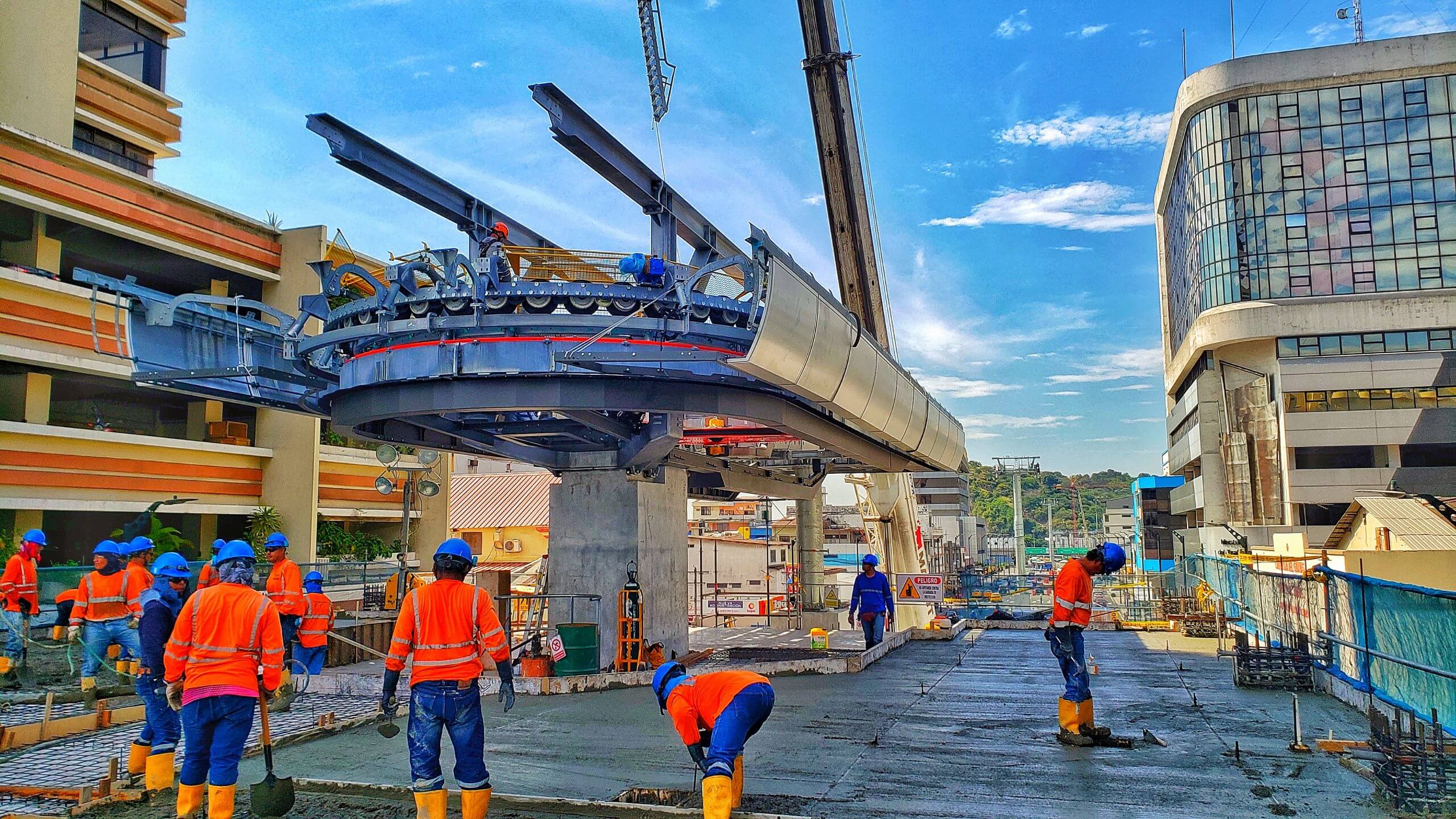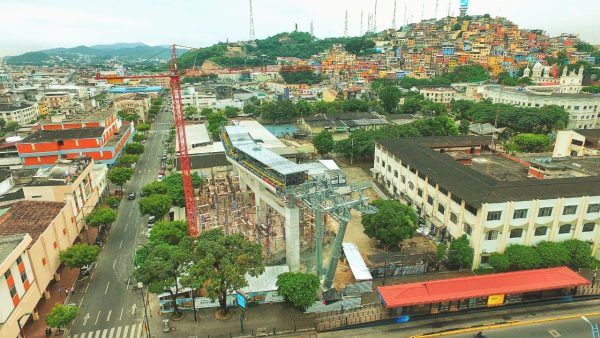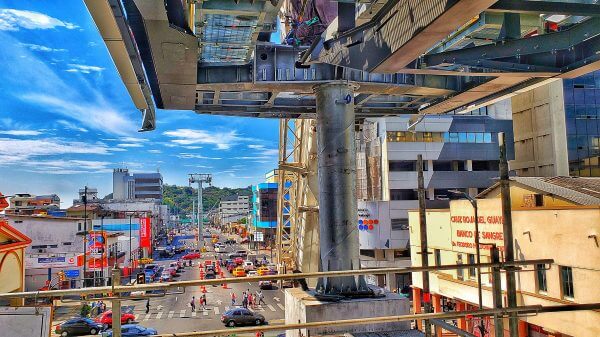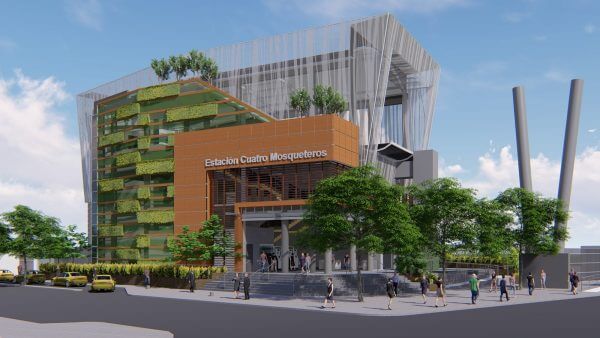
Cities, SI World 2/2019
Guayaquil: The ,,Aerovia,, cable car from Poma will soon be the new lifeline of the city
From mid 2020, the “Aerovia” cable car will link the neighbouring town of Duran with the largest city in Ecuador, by crossing the Rio Guayas parallel to the overloaded bridge. The 4.1 kilometre single-cable circulating track will then access important districts in the centre of Guayaquil.
“The cable car is an extension of and alternative to the bus network and it is expected to transport 40,000 people per day,” POMA Sales Manager for Latin America Guillaume Ployon reports. In comparison: The buses network from Duran transports around 150,000 people per day.
A cable car journey from the first to the last station takes 17 minutes; the bus takes 45 minutes for the same journey at peak times. “The cable car significantly improves the quality of life for residents,” Ployon says.
As Guayaquil is growing rapidly, like many Latin American cities (with a current population of around 2.3 million), a transport solution that crosses buildings, rivers and roads is ideal. “In Guayaquil, we have a “similar configuration“ to the to the cable car in Santo Domingo.
Both cities demonstrate that cable cars are also suitable for flat cities with obstacles,” emphasises.

Guillaume Ployon, POMA-Sales Manager Latin America
“The project “Aerovia” is part of the sustainable urban development of the city of Guayaquil. To support this sustainable approach, which is at the heart of their
strategy, Agence Française de Developpement (AFD) has financed 85 percent of the project investment costs.
The rest, as well as the operating and maintenance costs for the next 28 years will be covered by the concession company formed by POMA and our local partner SOFRATESA.”
Stations for social centres
154 gondolas of 10 passengers provide transport capacity of 2,600 people per hour and direction. The cable car travels at five metres per second – a higher speed is not necessary, owing to the short distance between the stations. The five cable car stations are designed as multi-storey buildings, which contain proximity services with restaurants, banks and other social amenities. Those stations will also be connected to the bus network in order to create an intermodal network.
“The stations therefore become social centres in the districts and the cable car acts as a new lifeline for the city,” Ployon says. Furthermore, the tourist factor of the cable car above the city roofs and over the floods of the Rio Guayas must not be underestimated – and all with limited land use, as the cable car requires space only for the five stations and 27 columns, of which seven are located in the wide river delta of the Rio Guayas.

Around 70 percent of the cable car is already installed; opening of the “Aerovia” is planned mid 2020. Photos: POMA
Construction has been underway since 2018 and the opening is planned for mid 2020. “We are therefore moving within the normal framework of a two-year project, despite the many challenges,” Ployon reports. Construction is complicated in particular by the soft ground in the river delta and by the tides.
The stations and columns therefore stand on several hundred stilts, which rammed up to 40 metres into the ground. “We are being helped here by local construction companies, which have great experience with the local conditions,” Ployon says.
Whilst POMA is responsible for the cable car technology, SOFRATESA is looking after the rest of the infrastructure (foundations, buildings etc.).

POMA as the track operator
The project, which is costing 134 million US dollars, is financed by a successful funding model. “85 percent of the total project cost is being financed by the
city by means of a long-term loan from Agence Française de Développement (AFD), and 15 percent is covered by the private sector“, Ployon enthuses.
This is a sustainable public transport project, which benefits the urban community fares of only 70 cents. In addition to the construction, the concession company POMA – SOFRATESA is also responsible for operation and maintenance of the cable car for the next 28 years.
This innovative, sustainable urban mobility from the French cable car manufacturer will be the new lifeline the city. ts

The multi-storey cable car stations are designed as new social district centres.
AEROVIA DURAN – GUAYQUIL
- Transport capacity 2,600 p/h/direction
- Length 4.1 km
- Travel speed 5 m/s
- Total journey time 17 min.
- Stations 5
- Columns 27
- Gondolas 154
- Gondola capacity 10 p.
- Investment sum US$ 134 m
- Opening 2020







